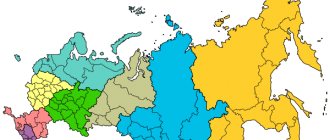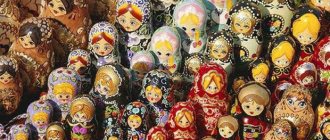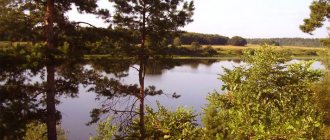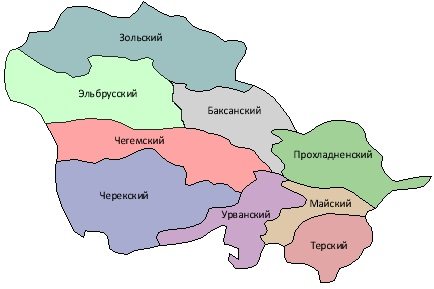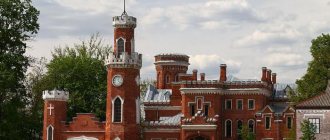The Amur Region is located in the southeast of the Russian Federation and is part of the Far Eastern District.
In 1948 it was separated as a separate administrative unit. The Amur region is the country's southern border with the People's Republic of China. The region also borders: in the west with the Trans-Baikal Territory, in the north with the Republic of Sakha, it is also called Yakutia, in the east with the Khabarovsk Territory, and in the southeast with the Jewish Autonomous Region. The Amur region is represented by a medium-sized territory, which occupies more than 300 thousand square kilometers.
What holiday is it today?
February 10, 2022, Thursday
Today are holidays, events: Diplomat's Day Tomorrow: World Sick Day Discovery of insulin
Today is the Orthodox holiday: St. Ephraim the Syrian. Venerable Ephraim of Novotorzhsky. Venerable Ephraim of Pechersk, Bishop of Pereyaslavl. Venerable Theodosius of Totem, Spasosumorin of the monastery, leader and founder... Tomorrow: Transfer of the relics of the holy martyr Ignatius the God-Bearer. Saints Gerasim, Pitirim, Jonah, bishops of Great Perm, Ustva...
Today is a national holiday: Ephraim's Day... Tomorrow: Lawrence's Day
Seasons
Seasons, four periods of the year (spring, summer, autumn and winter) characterized by certain average temperatures. The period during which the Sun passes through one of these sectors is called the season. Spring in the Northern Hemisphere and autumn in the Southern Hemisphere begin when the Sun passes through the initial circle of declination and its right ascension is 0° (vernal equinox). Summer in the Northern Hemisphere and winter in the Southern Hemisphere occur when the sun's right ascension is 90° (summer solstice). Autumn in the Northern Hemisphere and spring in the Southern Hemisphere begin when the sun's right ascension is 180° (autumnal equinox). The beginning of winter in the Northern Hemisphere and summer in the Southern Hemisphere is considered to be the winter solstice, when the direct ascension of the Sun is 270°... Next: Seasons. Russian folk calendar. Monthly words...
see also
- Amur region
- Symbols and landmarks of the Amur region
- Cities of Russia
| [ + ] Cities by regions of Russia | |
| Cities of the North-West (NWFD) | St. Petersburg (and its cities) • Leningrad region (historical Staraya Ladoga) • Arkhangelsk region • Vologda region • Kaliningrad region • Karelia • Komi • Murmansk region • Nenets Autonomous Okrug • Pskov region |
| Cities of the Volga region (Volga Federal District) | Bashkortostan • Volgograd region • Kalmykia • Kirov region • Mari El • Mordovia • Nizhny Novgorod region • Orenburg region • Penza region • Perm region • Samara region • Saratov region • Tatarstan • Udmurtia • Ulyanovsk region • Chuvashia |
| Cities of Southern Russia (SFD) | Sevastopol (including Inkerman) • Republic of Crimea • Adygea • Astrakhan region • Krasnodar region • Rostov region |
| Cities of the North Caucasus (NCFD) | Dagestan • Ingushetia • Kabardino-Balkaria • Karachay-Cherkessia • North Ossetia - Alania • Stavropol Territory • Chechen Republic |
| Cities of the Urals (Ural Federal District) | Kurgan region • Sverdlovsk region • Tyumen region • Khanty-Mansi Autonomous Okrug - Yugra • Chelyabinsk region • Yamalo-Nenets Autonomous Okrug |
| Cities of Siberia (Siberian Federal District) | Altai Republic • Altai Territory • Irkutsk Region • Kemerovo Region • Krasnoyarsk Region • Novgorod Region • Novosibirsk Region • Omsk Region • Tomsk Region • Tyva • Khakassia |
| Cities of the Far East (FEFD) | Amur Region • Buryatia • Jewish Autonomous Region • Trans-Baikal Territory • Kamchatka Territory • Magadan Region • Primorsky Territory • Sakha (Yakutia) • Sakhalin Region • Khabarovsk Territory • Chukotka Autonomous Region |
| see also | Cities of the DPR, LPR, Transnistria, South Ossetia • Regions of Russia • Cities of Russia |
Folk calendar about every day
Every day one season always replaces another and this determines a person’s way of life. In connection with this, a folk calendar was formed in which there were practically no nameless, unmarked days. Every day was special, had its own purpose. All this was determined by climate conditions and astrological phenomena.
A calendar is a system for counting periods of time. The first calendars arose a long time ago, in ancient times, because there was a need to measure time. The word calendar comes from the Latin words caleo - to proclaim and calendarium - debt book. This is due to the fact that in Ancient Rome the beginning of each month was especially proclaimed, and because it was customary to pay debts on the first day of the month. Different peoples counted time differently. Some calendars are based on the changing phases of the moon - lunar calendars; in others - the change of seasons - sunny; in others, the length of the year was coordinated with the change of seasons, and the counting of months was associated with the phases of the Moon. Such calendars are called lunisolar.
In Rus', the calendar was called a monthly calendar. Every day, the month book covered the entire year of peasant life, “describing” day by day, month after month, where each day had its own holidays or weekdays, customs and superstitions, traditions and rituals, natural signs and phenomena. The cyclical nature of the calendar is reminiscent of human life, where spring is youth, summer is heyday, autumn is the time of harvesting fruits (it’s good if there are some, otherwise you can live your life without collecting fruits), winter is the time of wisdom and peace. This cyclicality and rhythm determined the way of life of the farmer. The folk calendar was an agricultural calendar, which was reflected in the names of the months, folk signs, rituals and customs. Even the determination of the timing and duration of the seasons is associated with real climatic conditions. Hence the discrepancy between the names of the months in different areas... Next: Folk calendar...
Fishing calendar for every day
The fishing calendar should not be taken as an absolutely indisputable truth. Fish biting is greatly influenced by a whole range of natural factors, as well as the influence on the nature of man himself. You must not forget that the fish’s bite depends and is determined not only by the calendar dates and biological cycles of their life, reflected in the calendar, but also, no less, by the state of their habitat; the bite also depends on weather conditions: air and water temperatures, cloudiness, wind direction and strength, etc... Next: Fishing calendar...
Urban settlements
- Magdagachi
Population 9,895 (2020).
- Progress
Population 9,517 (2020).
- Seryshevo
Population 9,438 (2020).
- Arhara
Population 8,508 (2020).
- Novobureysky
Population 6,688 (2020).
- Fevralsk
Population 4,560 people (2020).
- Erofey Pavlovich
Population 4,438 (2020).
- Talakan
Population 4,139 (2020).
- Bureya
Population 4,021 (2020).
- Urusha
Population 3,262 (2020).
- Ushumun
Population 1,899 (2020).
- Novoraichikhinsk
Population 1,842 people (2020).
- Sivaki
Population 1,568 people (2020).
- Ekimchan
Population 986 people (2020).
- Tokur
Population 816 people (2020).
Orthodox calendar about every day
Orthodox calendar: Orthodox, Church and Christian holidays.
The church year is an alternation of weekdays and holidays. On weekdays, a person is called to work “by the sweat of his brow to earn his bread.” Holidays are given in order to feel liberation, to rise above the bustle and routine of the world, to feel involved in the highest of worlds, “where there are no illnesses, sorrows and sighs, but endless life.” Since ancient times, holiday cycles have been associated with the seasons. The pagans associated them with the worship of the forces of nature, the cult of which in the Old Testament was replaced by gratitude to the Creator for the universe. And although the connection between holidays and the seasons has not completely lost its power, since God is present in everything, in the plant and animal world, in human works, it nevertheless faded into the background, giving way to a spiritual foundation built on the Sacred Scriptures. The history of Orthodox holidays dates back to the times of the Old Testament. Each of the Orthodox holidays is dedicated to the remembrance of the most important events in the life of Jesus Christ and the Mother of God, as well as the memory of saints... Next: Orthodox calendar...
Tourism of the region
Tourism in this unique area is just beginning to develop. The unusual and unique landscapes of the territory attract many tourists to visit the Amur region. The wonderful combination of mountain ranges and deep rivers makes it possible to develop eco-tourism. There are a large number of nature reserves located on the territory of the Amur Region, almost all of them provide interesting excursions to incredibly beautiful protected areas. Also, many tourists come here for good fishing and hunting.
Save it for yourselfPrint
0
Author of the publication
offline 4 hours
Russian folk calendar for every day
The word “sign” comes from the word “notice”, i.e. observe. As a result of observing what happens around a person every day, he accumulates life experience. This knowledge was passed down from generation to generation, carefully preserved and people trusted it as a sacred book. Many signs have come to us from the depths of centuries without losing their knowledge. Each of us is free to choose: to dismiss all this as an absurd superstition or to take a closer look at the signs and take the centuries-old experience of generations more seriously. Most of us, when taking exams, ask them to scold them, boasting about some kind of good fortune or luck, spit so as not to jinx them or knock on wood, take a detour if a black cat crossed the road, are afraid of the number 13 and much more. And who among us does not have lucky things, numbers? Who has never resorted to the help of fate at least once in their life, who has not believed in secrets? It’s as if everything connected with signs is hidden somewhere deep in our subconscious. Often we remember them mechanically, unconsciously, or just as a joke. But, undoubtedly, the signs contain a lot of accurate knowledge and practical wisdom of our ancestors. They cover all the characteristic, often difficult to perceive, natural phenomena. Signs have preserved a lot of what was in old folk holidays and customs; they help predict the weather, grow crops... Next: Folk signs...
Amur region
The Amur Region is a subject of the Russian Federation and is part of the Far Eastern Federal District. The administrative center is the city of Blagoveshchensk.
The region was formed on October 20, 1932 as part of the Far Eastern, and since 1938 Khabarovsk, region. By decree of the Presidium of the Supreme Soviet of the USSR of August 2, 1948, it was allocated as an independent region. It included districts of the Chita region. At the same time, the Verkhnebureinsky district was transferred to the Khabarovsk Territory, so in 1948 there were 23 districts in the region.
Currently, according to the Charter of the Amur Region, the subject of the Russian Federation includes the following administrative-territorial units: 7 cities of regional significance - Belogorsk, Blagoveshchensk, Zeya, Raichikhinsk, Svobodny, Tynda, Shimanovsk, 20 districts and the closed administrative-territorial entity Tsiolkovsky.
The population of the region according to 2022 data is 801,752 people. The territory area is 361,908 km². The Amur region borders the Republic of Sakha (Yakutia) in the north, the Khabarovsk Territory in the east, the Jewish Autonomous Region in the southeast, and the Trans-Baikal Territory in the west. The southeastern border of the Amur Region is also the state border of the Russian Federation and borders the People's Republic of China.
The region has no direct access to the seas. Most of it is located in the Upper and Middle Amur basin, which determines its name. The Amur River flows in the south for 1246 km. The climate of the Amur Region is transitional from sharply continental in the northwest to monsoon in the southeast. The formation of such a climate is due to the interaction of solar radiation, circulation of air masses and the following geographical factors: latitudinal position, remoteness of the territory from the sea, influence of the underlying surface in the form of relief, vegetation, and water bodies.
Winter in the region is harsh. Summer in the south of the region is very warm with sufficient or excessive moisture. Average absolute maximum temperatures in the north of the region can reach 38 °C, and in the south up to 40 °C. The entire region is characterized by a summer maximum precipitation, which is due to the monsoon climate.
The region's territory is located in various natural zones. One of its main wealth is forests, which occupy more than half the area and make up 17% of the forest area of the Far East. The vegetation of the region is rich and varied. The flora includes about 2000 species of higher plants, of which 21 rare species are listed in the Red Book. Here, representatives of several floras converge, mutually penetrate and mix: Manchurian, Okhotsk-Kamchatka, East Siberian, Pacific and Mongol-Daurian, that is, plants of three climatic zones coexist - subarctic, temperate and subtropical.
The region is home to 64 species of mammals, more than 320 species of birds, 9 species of reptiles, 6 species of amphibians; in rivers and lakes there are over 70 species of fish. Insects and invertebrates are very diverse, but it is simply impossible to name the number of species due to poor knowledge of this group. In the animal world, as well as in the plant world, there was a mixture of various faunas - East Siberian, Amur, Okhotsk, Mongol-Daurian, high-mountain.
The region is included in the 8th time zone together with the Republic of Sakha (Yakutia), where the difference with Moscow time is 6 hours.
Main industries: electric power, mining (gold, coal), forestry and woodworking, production of building materials. Currently, the Amur Region specializes in generating electricity, mining brown coal, gold, harvesting commercial timber and forest products from it, and producing mechanical engineering and metalworking products. The products produced are mainly sold on the domestic market; forest products are exported to Japan, the DPRK and the People's Republic of China.
In terms of distribution of agricultural land in the Far East, the Amur Region occupies a leading position, accounting for 38% of farmland and 59% of arable land in the Far Eastern economic region. Implemented: animal husbandry, meat and dairy cattle breeding, poultry farming, beekeeping, reindeer husbandry, fur farming, pig farming. Crop production: barley, wheat, oats, buckwheat, corn, soybeans, potatoes, vegetables, perennial grasses, annual grasses are grown.
Transport: Trans-Siberian, Baikal-Amur and Amur-Yakutsk railways, Ulak - Elga railway line, Federal highway R-297 "Amur" and A-360 "Lena", Ignatyevo airport and shipping on the Amur and Zeya rivers.
In the Amur region there are three state universities, a state medical academy, a higher combined arms command school and four branches of higher educational institutions.
The flag of the Amur Region was approved by the law of April 26, 1999, with amendments approved by the law of April 24, 2008, and was included in the State Heraldic Register of the Russian Federation. It is a rectangular panel with a width to length ratio of 2:3. The lower part of the flag is blue, symbolizing the Amur River, and is separated from the upper part by a silver wave-shaped belt, reminiscent of a river wave. The upper part of the cloth is red, symbolizing the rich history of the Amur region, labor and military exploits of the Amur people.
The first Coat of Arms of the Amur Region was approved by law on April 26, 1999. The second - April 24, 2008. Initially, the coat of arms was approved with an oak wreath and a red ribbon, but in 2008, on the recommendation of the Heraldic Council under the President of the Russian Federation, the wreath was replaced with the ribbon of the Order of Lenin, which the region was awarded in Soviet times. Now the coat of arms of the Amur region is a green heraldic shield with a silver wavy belt, accompanied by three golden stars with eight rays at the head of the shield. The shield is topped with an ancient royal crown and surrounded by the ribbon of the Order of Lenin.
Holiday calendar, dates and events of the year
All state and professional holidays in Russia, including significant World and International holidays, and other equally interesting holidays and events about every day.
The holiday has always kept pace with the history of mankind. Social time can be divided into three types: everyday life (weekdays), weekends and holidays. Everyday life is a series of practices repeated day after day and every day (work). Weekends are regular breaks from the rush of everyday life. It is believed that on weekends a person should restore his strength after working days. Day off, non-working day. A holiday is a day of celebration established in honor or in memory of someone or something. A day or series of days celebrated by the church in memory of a religious event or saint... Next: Calendar...
Prayer book, Orthodox prayers for every day
Prayer is the most powerful means for healing all illnesses - both physical and mental. Prayers can be laudatory or grateful, petitionary and repentant. If we have offended God, sinned, we must ask Him for forgiveness, that is, repent. Such prayers are called repentant prayers. If everything is fine with us, if we and our loved ones are healthy and prosperous, if we have a place to live, something to wear, something to eat, we must glorify and thank God for this. Such prayers are called praise or thanksgiving. If some misfortune, illness, trouble or need happens, you need to ask God for help. Such prayers are called petitionary... Next: Orthodox prayers...
Zodiac, astrological, eastern calendar. Zodiac signs
In ancient times, to establish the calendar, priests used knowledge of the positions of all the planets. Before the reform of Peter 1, the New Year was celebrated on the Day of the Autumn Equinox. On this day, according to ancient legend, the most peaceful treaty was concluded between the Great Race (ancient Slavs) and the Great Dragon (ancient Chinese) and it was approximately 7518 years ago... For the ancient Slavs, the calendar month corresponded to the lunar cycle from new moon to new moon, taking into account such Thus, the relationship of the entire annual cycle with astronomical and natural phenomena. There was no coherent calendar system. The main natural phenomena are still considered to this day to be the days of the solar equinox and solstice - the Slavic holidays Maslenitsa, Kupala, Ovsen and Kolyada. But during the time of Peter 1, all ancient Slavic calendars were abolished and a new Western European calendar from the Nativity of Christ (Julian calendar) was introduced, while the beginning of the calendar was moved to January 1. The Julian calendar (old style) did not take leap days into account and accumulated one extra day every 128 years. After the October Revolution in 1918, the Gregorian calendar (new style) was introduced in Russia, according to which an amendment of 13 days was introduced. The calendar of the ancient Slavs was based on two planets: the Sun and the Moon. And now they don’t use anything at all. The calendar has become static. There is no such thing as the calendar, it turns out, resting on some planet. Nobody even knows about it. There are just some standard numbers, there are months and holidays. The calendar is based on the Sun and Moon. Why is this so? Because these two luminaries influence the Earth. The Earth revolves around the Sun, and the Moon revolves around the Earth. And these two luminaries create the atmosphere on the planet. From here the calendar is built... Next: Astrological calendar...
Map of the Amur region with cities and villages
A map of the Amur region with districts gives an idea of the location of the most significant cities in the region. These include:
- Blagoveshchensk, the capital of the region, located in the very south near the river. Amur;
- Svobodny – located on the Trans-Siberian Railway, is the center of the Vostochny Cosmodrome;
- the city of Zeya, located at the confluence of the Gilyuy River and the Zeya River (originally it was a gold mining center, currently it is also the center of the Zeya Hydroelectric Power Station);
- Belogorsk is the agricultural center of the region (Trans-Siberian);
- Raichikhinsk is a mining town that provides coal mining at the deposit of the same name;
- The city of Tynda is the nodal center of the BAM.
Among the settlements that do not have the status of a city, but have special economic importance, it should be noted the village of Talakan, which performs the functions of servicing the existing Bureyskaya hydroelectric power station, as well as the construction of the Nizhnebureyskaya hydroelectric power station.
Most of the region's population is concentrated in the southeastern part, which has the most favorable transport and natural conditions.
Dream books online, interpretation of dreams
A dream book is nothing more than an interpreter of dreams and dreams, a translator of dreams. Since ancient times, people have been using dream books; dreams have always been given great importance, and people have often noticed the prophetic properties of some dreams. The dream book can become your faithful assistant every day and throughout your life, thanks to the dream interpreter you can always make the right decisions, the dream book will help you resist temptations in time, and will warn you against wrong steps and frivolous actions. Further…
